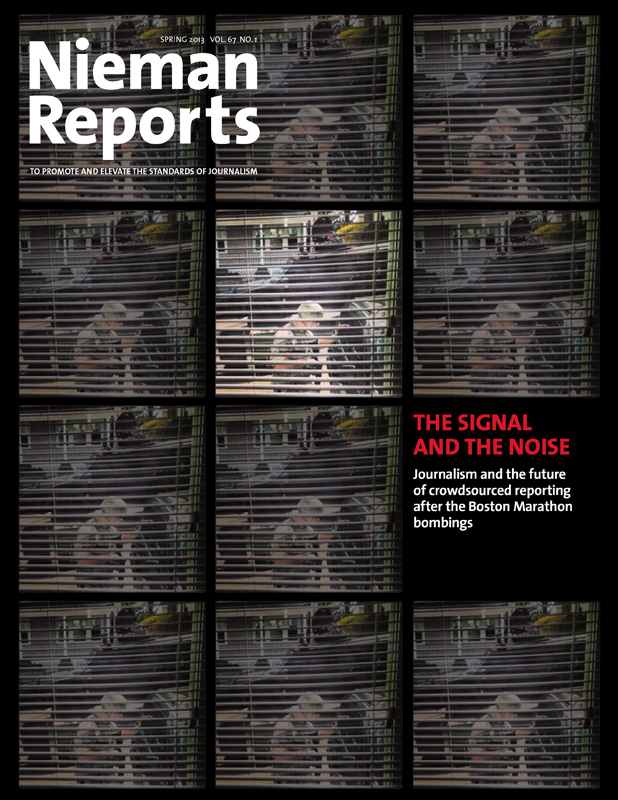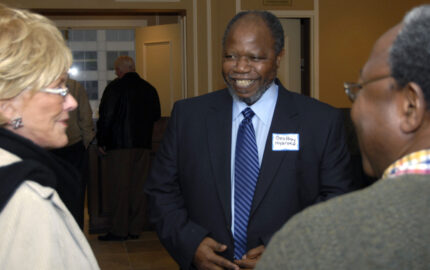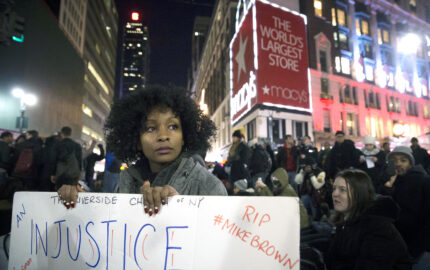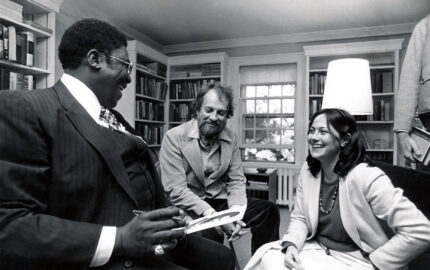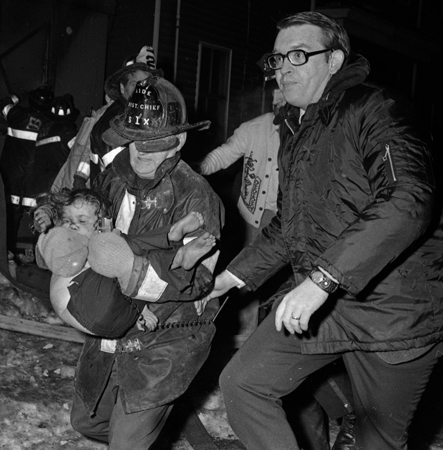
Photo by Stanley Forman
Stanley Forman, NF ’80, a former staff photographer for the Boston Herald American, is now a cameraman for WCVB News in Boston. This photograph, taken in 1977, is in his new self-published book “Before Yellow Tape: A Pulitzer Prize Winner’s Fire Images.” Three years ago he reunited the girl in the photo with the firefighter who saved her life.
I was out cruising for news when I heard about this fire in South Boston. That’s actually the first shot I made at the fire. The girl they’re carrying is Tammi Kurtz (now Brownlee). She was just pulled out of the fire, and she was being rushed to an ambulance. She wasn’t burned that I know of, but she almost succumbed to smoke inhalation and spent three months in the hospital. Five people died from the fire, including Tammi’s mother, who died a couple of weeks later, and her brother, who died at the scene.
Tammi contacted me in 2010. She never had any information about the fire so she was searching for anything she could find. She had Googled “Boston fires” and found this photo and my name, then I did a little research and found the negatives. I recognized one of the firefighters who was there, Alfred Chase. I asked him about it and he said, “You know, I was the one who found her.” So we decided to do a story for my TV station’s news magazine, “Chronicle.” We brought her to the scene of the fire—which is still a vacant lot—and introduced her to Alfred. She had no idea who he was, but when he told her his story it was quite an emotional scene.
The title of my book, “Before Yellow Tape,” is not a criticism of how far back we’re kept from the scenes now. It’s just an acknowledgement that things have changed. Let me put it this way, there was no tape back then, but sometimes you were held back. They’d say, “Don’t go any farther than this.” For the most part though, we had great access. I mean, I was on top of that fire. You couldn’t ask for anything closer. Nobody bothered me. That’s the way it was back then.
I always thought O.J. Simpson, that whole thing with the contaminated site, just screwed us all. Because then the white paper boots came out. I’m not saying it’s bad, if that’s what helps solve a case, but it put us on the other side of the tape.
More information about the book is available at www.beforeyellowtape.com and www.stanleyformanphotos.com
